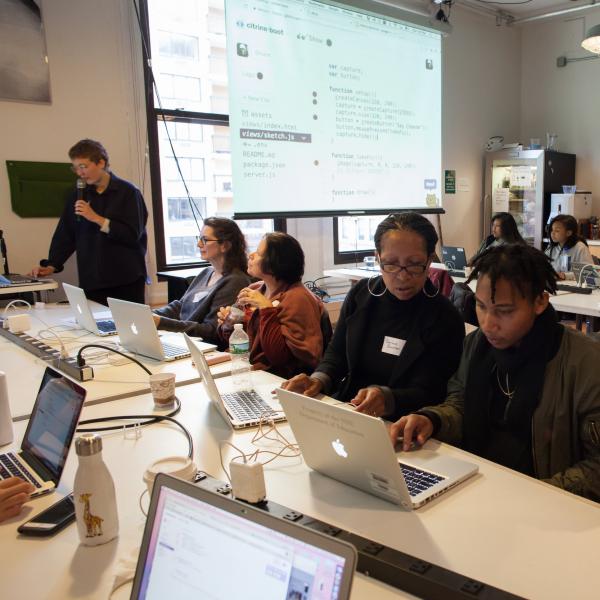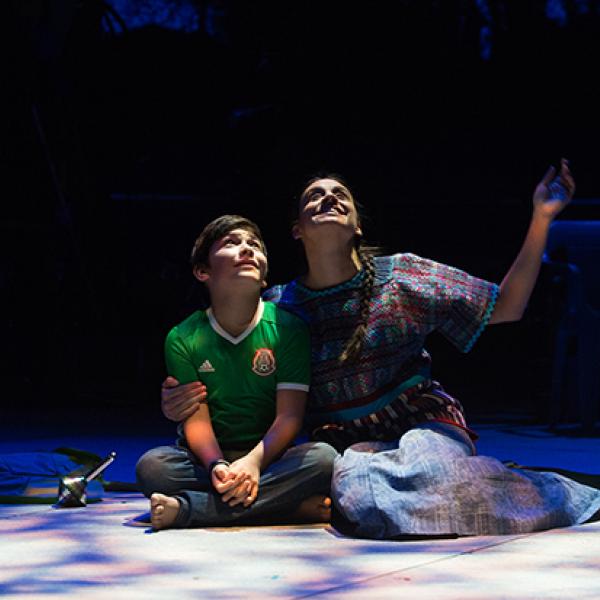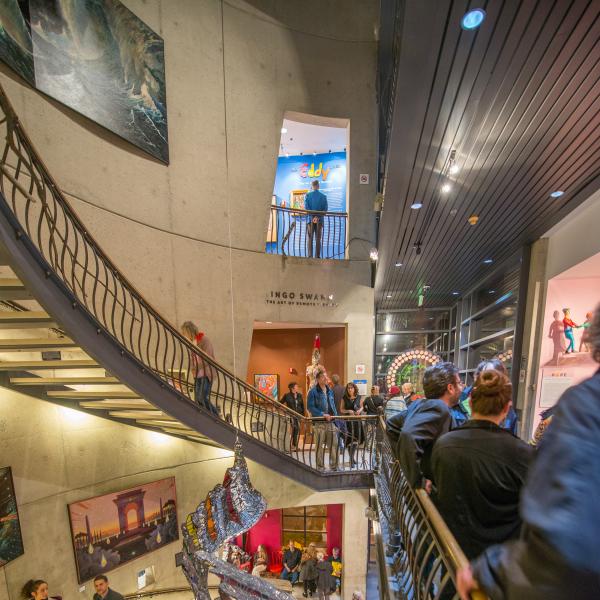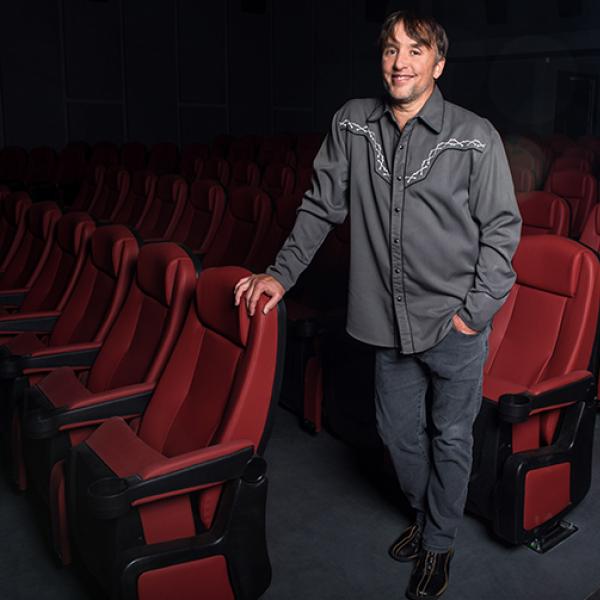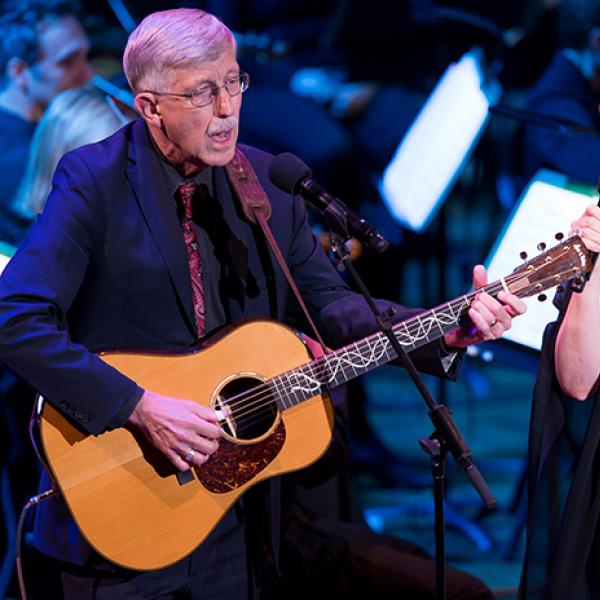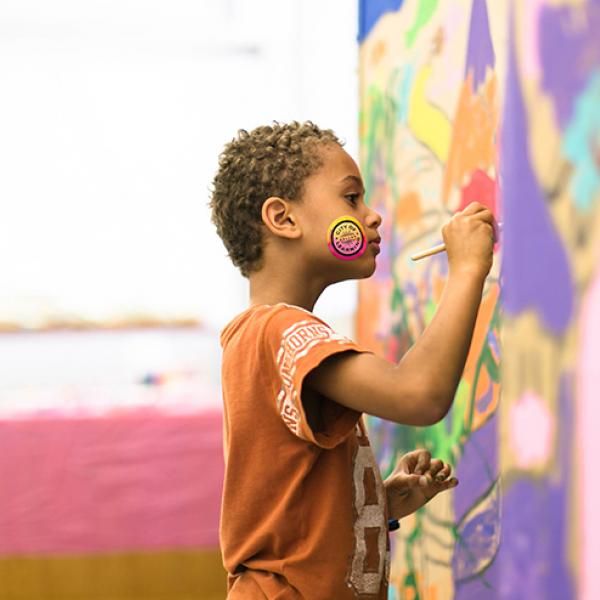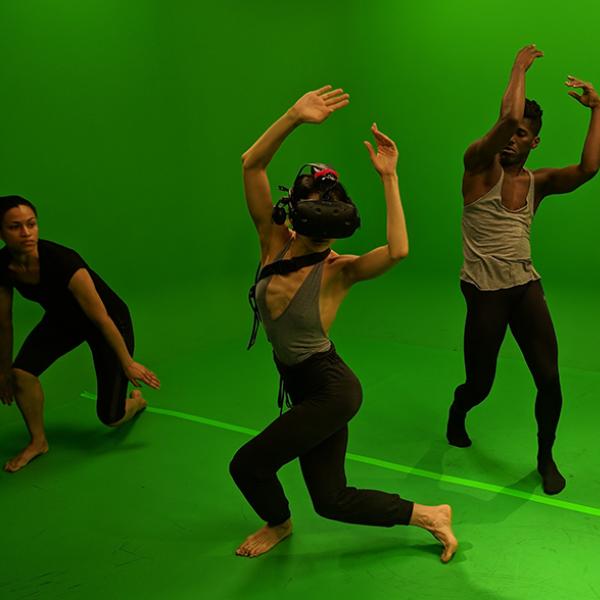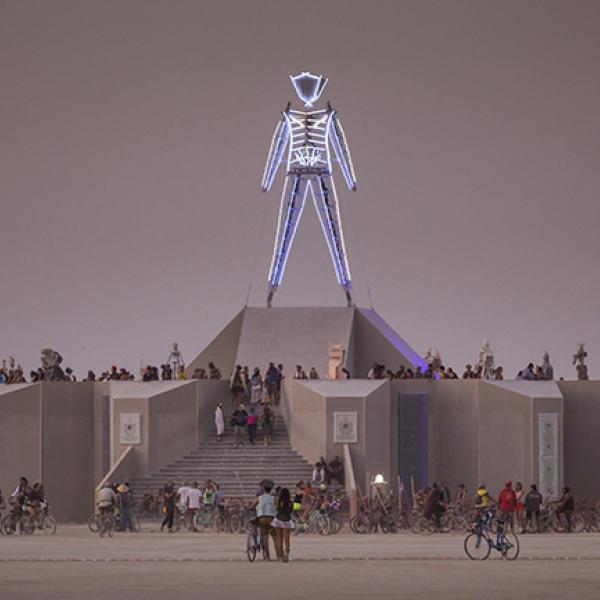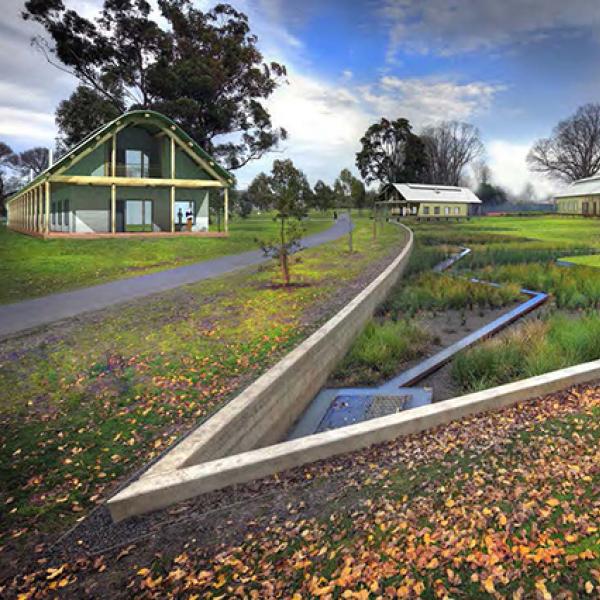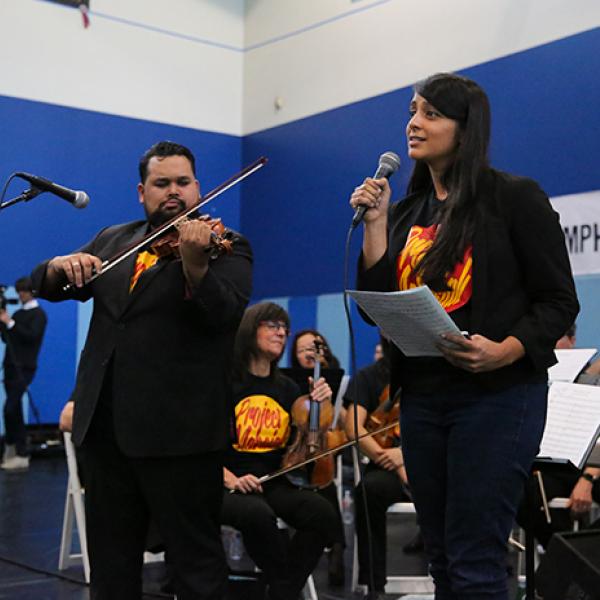Investing in Creativity
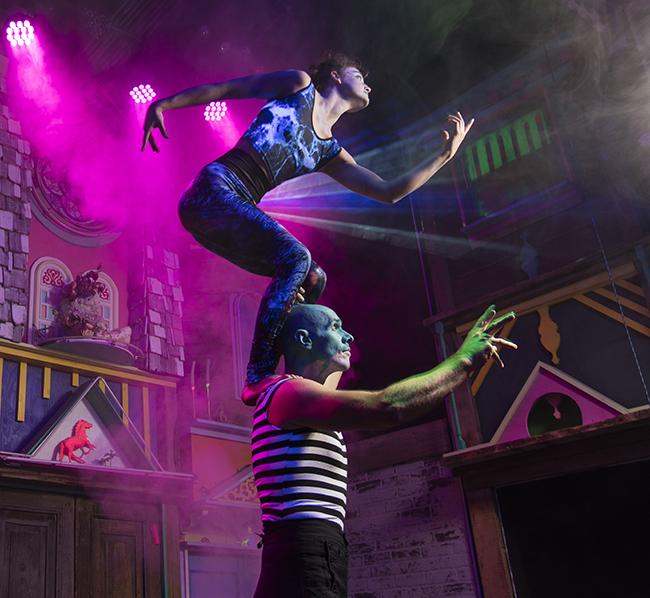
Call it installation art. Call it immersive storytelling. Call it theater, or theme park, or just straight-up weird. Meow Wolf can accurately be described in innumerable ways while still remaining totally indescribable. With its psychedelic, pop art, interactive environment, no single term can fully capture the Meow Wolf experience.
Meow Wolf was founded in 2008 as an art collective in Santa Fe, New Mexico, to create space in the city’s art scene for the group’s extravagant ideas. “We wanted to do crazy things,” said Caity Kennedy, a Meow Wolf cofounder and one of the group’s four art directors. “We wanted to do things that galleries couldn’t sell. We wanted the self-determination of doing our own thing without having to ask for permission.”
Initially, Meow Wolf created temporary installations, including Nucleotide (2013), which re-envisioned a coral reef as a world of sparkle and sound; OmegaMart (2012), a realistic supermarket that stocked products generated by artists and local students, including “Giant Sponge in a Box for Cows that Have Been Abducted”; and The Due Return (2011), which Meow Wolf describes as “an inter-dimensional ship settled on an alien landscape.” It was the $200,000 The Due Return generated in ticket sales that made Meow Wolf realize there was potential to create something bigger, something bolder, something permanent.
House of Eternal Return opened in 2016 in an old bowling alley owned by Game of Thrones author George R.R. Martin, who purchased the space specifically for Meow Wolf. The premise for the 20,000-square-foot installation is the mysterious disappearance of the fictional Selig family, all of whom have vanished after conducting a secret experiment in their home. Visitors are invited to explore their house, rifle through their diaries, open their cupboards, and snoop through their medicine cabinets. As visitors dig deeper, they’ll discover portals into other dimensions, which is where, in the words of Lewis Carroll, things become “curiouser and curiouser.” Each space offers its own wild expedition for the senses, from dayglo cityscapes to iridescent tree forts to comic art that has seemingly exploded onto every inch of wall. There is no map for visitors to follow, and nothing they can’t touch or explore as they try to piece together what happened to the Seligs. House of Eternal Return is not just an exhibition; it is an entirely new model for what the arts can be.
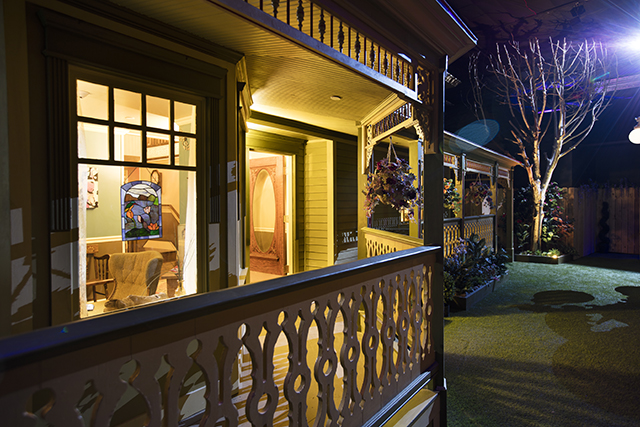
|
Since it opened, House of Eternal Return has become nothing short of an artistic phenomenon. It has welcomed more than a million visitors, generating millions and millions in ticket sales. In a city with no shortage of art museums and galleries, it’s consistently listed as one of Santa Fe’s must-see attractions by outlets ranging from CNN Travel to SantaFe.Com. More than 200 artists now form Meow Wolf’s ranks, all of whom receive salaries and benefits, including healthcare. The group’s mind-bending success has led to major expansion efforts: Meow Wolf will open an entirely new exhibit in Las Vegas in 2019, and a third location in Denver in 2020, both of which will be roughly triple the size of the Santa Fe experience. In each city, hundreds of artists will be employed to create the fantastical realms that are Meow Wolf’s hallmark.
Meow Wolf CEO and cofounder Vince Kadlubek said part of the reason he thinks Meow Wolf strikes a chord is because it appeals to one of the most basic human drives: curiosity. “We create an opportunity for people to be explorers, and to be scientists,” he said. “When you come inside of a Meow Wolf exhibition, you’re finding clues, you’re discovering rooms, you’re venturing into unknown spaces. That excites a part of humans that we have long forgot about. At the heart of it, we’re all scientists.”
The collective makes sure that the deeper one wants to dig, the more one will find, or “that your interest is rewarded every time,” said Kennedy, who as art director, is partially responsible for guiding artists to develop multiple layers of engagement. For instance, she said, you might first marvel at a room in House of Eternal Return. But then you might notice an interesting texture on a wall. Upon closer inspection, the texture reveals itself to be a group of mice, one of which has a tail that can be pulled to uncover a diorama. “We take the illusion as far as we can to satisfy our own vision of it,” she said.
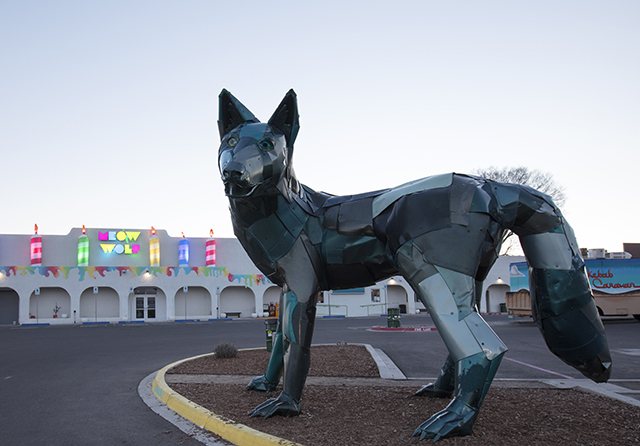
|
This level of detail “allows [visitors] into the art in a way that they end up feeling a certain ownership of discovery that is, I think, very akin to making the thing,” said Kennedy. “We love the idea of being able to let not just more and more artists into the creative experience, but more and more viewers into as similar an experience as possible, and to open their ideas of what they could do.”
This is essentially what Kadlubek has sought to make the heart of the whole Meow Wolf experience. “We’re trying to bring that creative spark back to the general population, back to families and kids and people that don’t feel comfortable inside of museums or galleries or at art fairs or festivals,” he said. “[We’re trying to] bring that creativity to them in a way that is new and accessible and welcoming, and within a context that can be understood and enjoyed.”
Meow Wolf’s quest to revitalize our creative selves extends beyond its exhibitions. The group runs the David Loughridge Learning Center, which hosts artmaking workshops and open studio time for youth, as well as special events for teens, adults, and people with disabilities and addiction. Meow Wolf also frequently collaborates with local schools, working with students to create artwork for their school building or sometimes even for Meow Wolf exhibitions. The organization also awarded $500,000 to local charities and schools in 2017, hosted 8,000 students during field trips, and gave out 2,000 free passes to community members unable to pay the House of Eternal Return’s entry fee.
But just as visionary as Meow Wolf’s maximalist approach to creativity is its commitment to changing attitudes and practices when it comes to art and economics. Kadlubek hopes that Meow Wolf’s success will resonate with policymakers and business owners, and “awaken them to the actual dollar value of creativity,” he said. “Creativity’s not something that we can feel sorry for. It’s something that we should invest in because it’s going to return on that investment.”
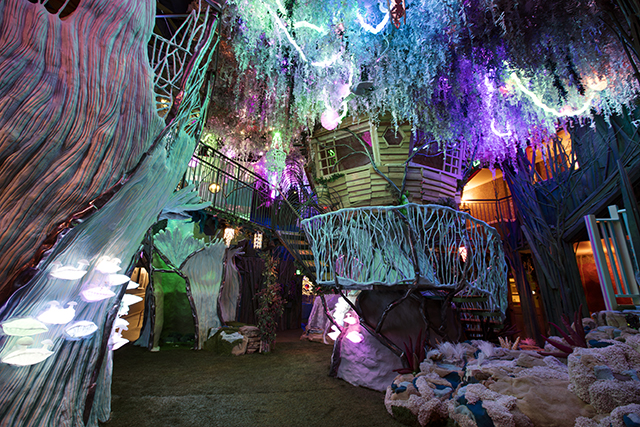
|
Part of this investment is making sure that artists have the resources needed to financially survive. In addition to providing all Meow Wolf members with a living wage, the House of Eternal Return’s gift shop sells work by 60 different local artists, who receive 60 percent of the profits. And in 2017, Meow Wolf awarded $250,000 in grants to DIY art groups—groups that “feel left out of the established fabric of arts and culture,” said Kadlubek, or that might not qualify for funding from more traditional grantmaking organizations. “These are the spaces where a real, vibrant, incredibly important creative culture is being birthed in many cities across the country,” Kadlubek said. “That’s why we started the DIY fund: we didn’t see anybody else coming out and supporting these community spaces.”
At the same time, Kadlubek hopes that Meow Wolf will help disprove the notion held by some artists that capitalism is a dirty word, or that making art with mass market appeal somehow cheapens the work. It’s an idea that didn’t come naturally to him or other Meow Wolf members: the collective at one point discussed burning the profits from The Due Return in a bonfire. But both he and Kennedy are hoping to pave a path forward where the art and business worlds can be bridged more frequently and with less angst. “The starving artist is romanticized, both by society and by artists,” said Kennedy, often to the detriment of both. “If you do find a way to support yourself financially and have health insurance, that doesn’t necessitate that you are leaving behind your culture, or that you’re stepping out of the artist’s lifestyle.”
Eventually, Kadlubek hopes that Meow Wolf’s efforts, from their installations to their business model, will help spark a cultural shift, one where celebrating creativity and imagination is simply matter-of-course. “More buildings should have more murals. More businesses should be thinking about how they’re creatively expressing themselves. And more artists should be hired on to your team because artists are valuable,” Kadlubek said. Although Meow Wolf has come a long way since its early days, Kadlubek said it has held tight to its original mission: “It’s [about] bringing forth more creativity into the world. More color, more imagination, more expression.”


